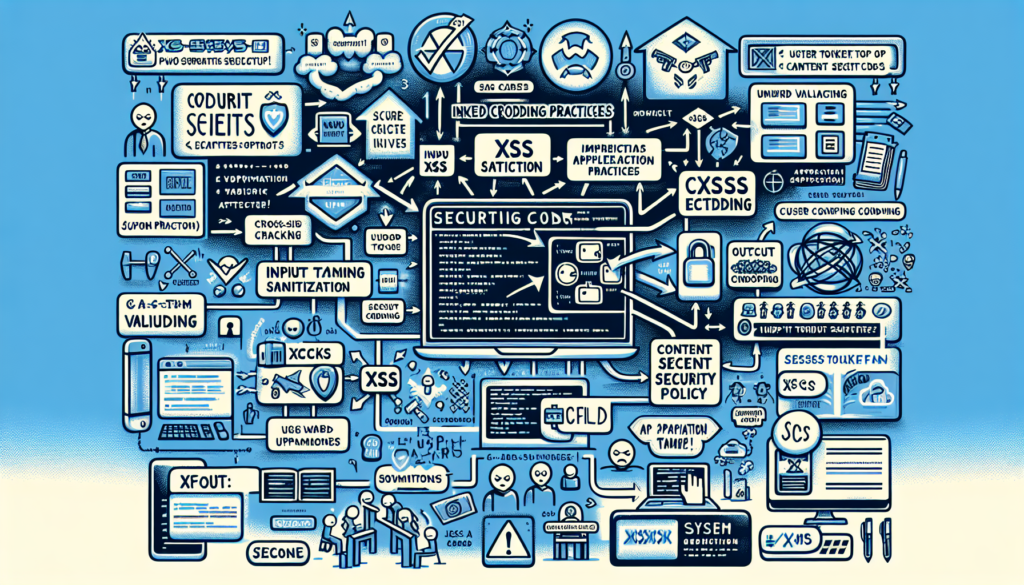Threat modeling serves as a crucial practice in designing secure applications. At its core, threat modeling helps identify potential security threats, prioritize them, and determine the right countermeasures. It’s a structured way to foresee the challenges ahead, allowing developers and security teams to systematically handle security vulnerabilities before they become actual problems.
Understanding Threat Modeling
Threat modeling is not merely a checklist or a one-time activity. Quite the opposite, it is an iterative process where the goal is to understand the potential threats to an application and how best to mitigate them. This involves understanding the architecture of the application, data flows, potential attack vectors, and relevant security controls.
There are various models and methodologies used, but the common thread across them is their focus on understanding how threats relate to system design and how to create robust defenses against them.
The Importance of Threat Modeling
Why is threat modeling indispensable?
– Proactive Approach: Proactively identifying threats is always more effective than reacting to them after an incident. Threat modeling encourages teams to anticipate vulnerabilities from the outset.
– Resource Allocation: By prioritizing threats based on their likelihood and potential impact, teams can allocate resources efficiently towards the most critical security concerns.
– Collaboration: It fosters collaboration among developers, security teams, and stakeholders. When everyone is involved, the quality of the security design improves significantly.
– Compliance: Many industry standards and regulations require some form of threat assessment. Engaging in threat modeling helps organizations meet these necessary compliance obligations.
Key Components of Threat Modeling
1. Identifying Assets: The first step in threat modeling involves identifying what needs to be protected. This includes user data, intellectual property, and anything else of value within the application.
2. Identifying Threats: What could go wrong? Tools like the STRIDE framework help structure thinking around different types of threats:
– Spoofing: Impersonating something or someone else.
– Tampering: Modifying data or software.
– Repudiation: Denying actions or transactions.
– Information Disclosure: Exposing information to unauthorized parties.
– Denial of Service: Rendering the system unavailable.
– Elevation of Privilege: Gaining unauthorized access to system resources.
3. Vulnerability Assessment: Assess the existing vulnerabilities in the application that might be exploited by attackers.
4. Mitigation Strategies: For each identified threat, determine how to either eliminate or reduce the risk. This could involve implementing encryption, logging, access controls, or other security measures.
5. Validation: Continuously validate and update the threat model as the application evolves. Changes in architecture, technology, and even user behavior can introduce new risks.
Common Threat Modeling Methodologies
There are various methodologies employed in threat modeling. Here are a few popular ones:
– STRIDE: A mnemonic that helps teams identify different types of security threats. This method places focus on understanding the threat landscape.
– PASTA: This stands for Process for Attack Simulation and Threat Analysis. It combines business objectives and technical aspects, intending to analyze attacks from a practical perspective.
– OCTAVE: This methodology is more focused on risk assessment and involves determining how vulnerabilities can affect the organization as a whole.
Each approach has its advantages depending on the application context, team size, expertise, and desired outcome.
Implementing Threat Modeling in Your Development Lifecycle
Integrating threat modeling into your development cycle can be done without overwhelming your existing processes. Here’s how to do it effectively:
– Early and Often: Start threat modeling as early as possible in the design phase and continue iteratively throughout the development lifecycle. This isn’t a one-off task—think of it as continuous maintenance.
– Cross-Functional Teams: Include not just developers but also product managers and stakeholders. Different perspectives can provide unique insights into various aspects of security.
– Utilize Tools: There are tools available that can streamline parts of the threat modeling process. While they don’t replace human judgment, they can provide frameworks and templates to guide teams.
– Educate and Gather Feedback: Regularly educate your team about the importance of security and incorporate feedback to enhance the threat modeling process. Educating everyone creates a culture of security awareness.
Challenges in Threat Modeling
While threat modeling is advantageous, there are challenges that teams often face:
– Complexity: For large applications, understanding the entire architecture can become overwhelming. It might seem daunting to identify every possible threat.
– Dynamic Environments: In environments that change rapidly, what you identified initially could change. Continuous updates can become tedious.
– Lack of Expertise: Not every team has someone with expertise in threat modeling. Proper training and a solid understanding of the practice’s principles are crucial.
– Cultural Resistance: Sometimes teams are resistant to integrating threat modeling into their processes. This often stems from a misunderstanding of its benefits and implementation.
Conclusion
Threat modeling may seem like just another step in the development process, but its value cannot be understated. It offers a structured way to understand security threats before they manifest, enabling organizations to implement robust defenses. By understanding assets, identifying threats, assessing vulnerabilities, and developing mitigation strategies, teams stand a better chance of building secure applications.
When treated as a fundamental part of the software development lifecycle, threat modeling transforms from a mere checklist into a critical technique for producing resilient software. The return on investment in terms of security preparedness far outweighs the effort it takes to integrate threat modeling into your workflow.
Final Thought
In an ever-increasingly digital world, every application poses potential risks. The best way to face those risks is not through defense after the fact but by understanding and preparing for them beforehand. Building a security-first mindset through effective threat modeling is not just smart; it’s essential.

